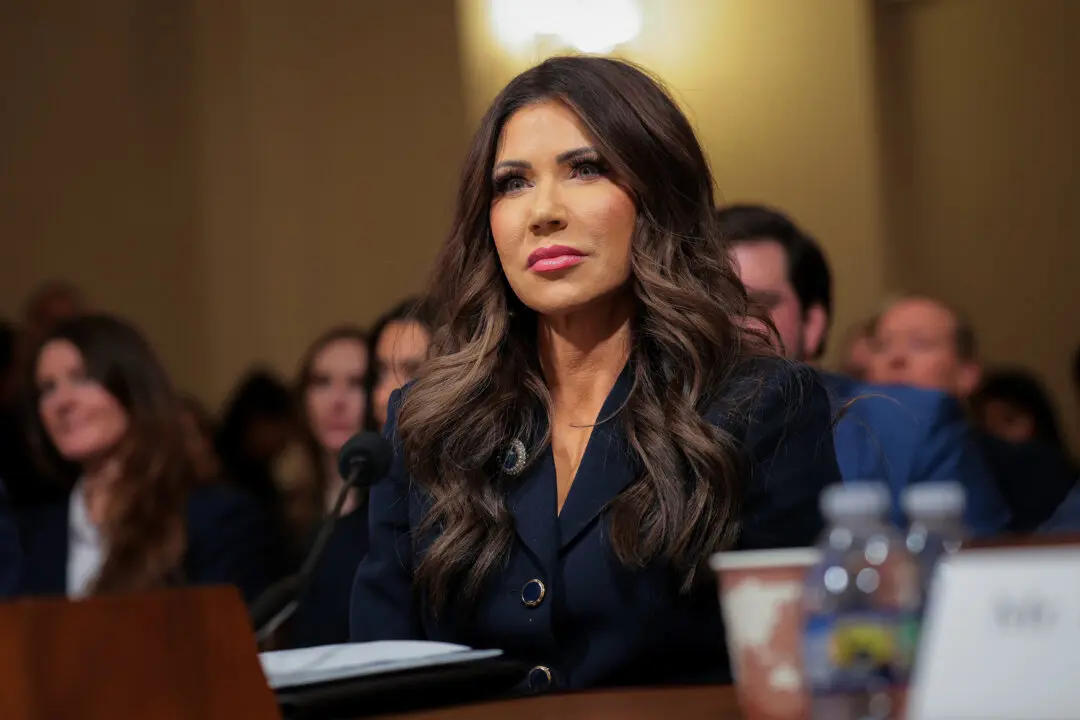1961: President John F. Kennedy introduces the concept of affirmative action across the United States with an executive order, number 10925.
The order included a provision that government contractors “take affirmative action to ensure that applicants are employed, and employees are treated during employment, without regard to their race, creed, color, or national origin.”
1964: Congress passes and Kennedy signs the Civil Rights Act into law, which prohibits the same discrimination as the 1961 order, but extends it to all employers, and includes prohibiting discrimination based on sex in regards to hiring, promoting, and firing.
In the final legislation, Section 703 (a) made it unlawful for an employer to “fail or refuse to hire or to discharge any individual, or otherwise to discriminate against any individual with respect to his compensation, terms, conditions or privileges or employment, because of such individual’s race, color, religion, sex, or national origin.”
The act included the creation of the Equal Employment Opportunity Commission to implement the new law.
1965: President Lyndon B. Johnson issued Executive Order 11246, which amended Kennedy’ firsts executive order. Johnson’s order prohibited employment discrimination based on race, color, religion, and national origin by any organization contracting with the federal government. The order includes a requirement for these contractors to take affirmative action to promote equal opportunity for both women and minorities. An example of the monitoring of compliance includes having contractors with 50 or more employees and with contracts totaling more than $50,000 (later becoming $10,000 in business in one year) establishing a written affirmative action plan and placement goals for women and minorities.
The Department of Labor enforces compliance of the order.
1969: The “Philadelphia Order,” or Order No. 4, initiated by President Richard Nixon, included definite goals and timetables for companies in hiring minorities.
“The craft unions and the construction industry are among the most egregious offenders against equal opportunity laws,” said Arthur Fletcher, assistant secretary of labor.
“We would not impose quotas, but would require federal contractors to show ‘affirmative action’ to meet the goals of increasing minority employment,” Nixon said.
1970: Alabama was found to, in the 37 years of the state trooper patrol, have hired not one black trooper. A federal district court ordered the state to end the discrimination, and after a black trooper had still not been hired one and a half years later, the district court required the state to hired one qualified black trooper or support person applicant for each white hired until 25 percent of the force was comprised of blacks. .
1971: Order No. 4 is revised to include women and expanded nationwide
1973: A memorandum is issued regarding permissible goals and timetables in state and local government hiring, called “State and Local Employment Practices Guide.” Strict quotas are not acceptable but goals and timetables are different and should be used, according to the guide.
1974: One of a number of cases that cropped up was Kaiser Aluminum’s policy of only hiring craft workers with prior experience at its Gramercy, Lousiana plant, which led to only 5 of the 273 skilled craft workers there being black. Kaiser and the union created a training program to fill craft jobs, and 50 percent of the new trainees were required to be black until the percentage of black workers matched the percentage of blacks in the local labor pool. The Supreme Court later held this program as legal.
1978: In a groundbreaking case for the education sector, Regents of the University of California v. Bakke, the Supreme Court ruled that race could be one factor used in choosing qualified applicants for admission. But the decision also ruled that the university’s medical school couldn’t continue a practice of reserving 16 seats in each entering class of 100 for disadvantaged minority students. The university had had two separate admissions programs, with one being for people in minority groups that were disadvantaged. People part of this group were rated in some aspects the same way but weren’t held to the 2.5 grade cut-off and weren’t ranked against candidates in the general admissions part.
“While the goal of achieving a diverse student body is sufficiently compelling to justify consideration of race in admissions decisions under some circumstances, petitioner’s special admissions program, which forecloses consideration to persons like respondent, is unnecessary to the achievement of this compelling goal and therefore invalid under the Equal Protection Clause,” write the Justice Lewis Powell Jr., the swing vote in the case.
1986: In Wygant v. Jackson Board of Education, the Supreme Court ruled that a school board in Jackson, Michigan shouldn’t have fired non-minority senior teachers before minority teachers, because the injury suffered by the senior teachers couldn’t justify benefits to minority teachers.
“We have previously expressed concern over the burden that a preferential-layoffs scheme imposes on innocent parties,” the court wrote in the decision. “In cases involving valid hiring goals, the burden to be borne by innocent individuals is diffused to a considerable extent among society generally. Though hiring goals may burden some innocent individuals, they simply do not impose the same kind of injury that layoffs impose. Denial of a future employment opportunity is not as intrusive as loss of an existing job.”
1979: President Jimmy Carter issued Executive Order 12138, which created a National Women’s Business Enterprise Policy and required each agency to take affirmative action to support women’s business enterprises.
1987: The Supreme Court ruled that Santa Clara County’s (in California) severe underrepresentation of women and minorities justified the use of race or sex as one factor in choosing qualified candidates to fill jobs.
1995: The University of California’s Board of Regents adopted two resolution regarding affirmative action.
The first required that race, religion, sex, color, ethnicity, and national origin not be considered in deciding whether to admit students. The second stipulated that these same attributes couldn’t be used in university employment and contracts. The two new rules took effect in 1996 and 1997.
1996: Four white law school applicants at the University of Texas challenged the school’s affirmative action plan because they said they were rejected because of unfair preferences toward less qualified minority applicants. The 5th U.S. Court of Appeals suspended the university’s program and ruled that the 1978 Bakke decision, in which it was decided that strict quotes weren’t acceptable but using race as a factor for admissions was, was invalid. “Educational diversity is not recognized as a compelling state interest,” wrote the court. The Supreme Court allowed the ruling to stand, but a case in 2033 invalidated this ruling.
1996: California’s Proposition 209 passes, abolishing the state from both discriminating against and granting preferential treatment to any individual or group based on the attributes listed above.
The following is included in the proposition:
(a) The State shall not discriminate against, or grant preferential treatment to, any individual or group on the basis of race, sex, color, ethnicity, or national origin in the operation of public employment, public education, or public contracting.
(e) Nothing in this section shall be interpreted as prohibiting action which must be taken to establish or maintain eligibility for any federal program, where ineligibility would result in a loss of federal funds to the State.
(f) For the purpose of this section, “State” shall include, but not necessarily be limited to, the State itself, any city, county, city and county, public university system, including the University of California, community college district, school district, special district, or any other political subdivision or governmental instrumentality of or within the State.
2001: The university’s Board of Regents rescinds the two resolutions and says it will follow Proposition 209 instead.
2003: The University of Michigan’s law school came under fire for having an affirmative action admissions policy but the Supreme Court upheld the policy. In a 5-4 decision where Justice Sandra Day O’Connor was the swing vote, the ruling was that the university’s law school had a compelling interest for promoting diversity, and using race as a factor but not having a quota system was constitutional. At the same time, the ruling stated that the point system used in the university’s undergraduate program, which gave additional points to minorities, had to be modified.
2007: Two school districts, one in Seattle and one in Kansas, were using race as a factor in primary school admissions. The Seattle school public school system’s 10 high schools were using race as one of several “tiebreakers” in making decisions about who to assign to a school if too many students indicated the same school as their first preference.
The Jefferson County School System began using a student choice plan where students choose which school to go to throughout primary school. There was a designation of students as Black/African American or other, because less than 5 percent of the school population is neither white nor Black. The plan formulated in 2001 mandated that every school had to attempt to maintain a Black student enrollment percentage of between 15 and 50 percent.
The Supreme Court ruled in another 5-4 vote that the districts’ policies focused solely on race without a broader effort to assess diversity.
Justice Kennedy, the swing vote, decided with both groups of four on the court in regard to different aspects of the case. The first was that the use of affirmative action only had a minimal effect on student assignments, leaving doubt as to whether it was needed, and that the districts’ plans weren’t narrowly tailored enough because there wasn’t a consideration of methods other than explicit racial classifications.
2008: Voters in Colorado and Nebraska vote on a ban of affirmative action. Nebraska’s ban passes; Colorado’s does not.
2013: The Supreme Court sends a case that could change affirmative action policies across the nation back to a lower court.





